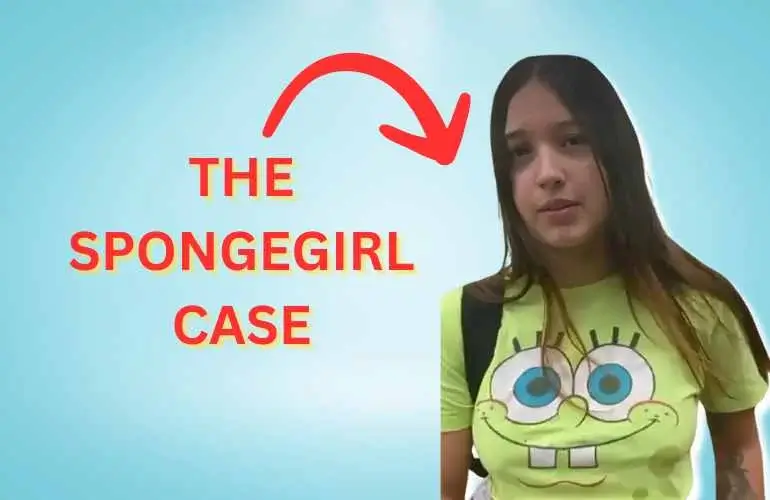In the vast landscape of viral sensations and internet phenomena, the SpongeGirl Case stands out as a captivating narrative that delves into the realms of intellectual property, cultural impact, and legal intricacies. From its humble origins as a viral video to its evolution into a legal dispute, the SpongeGirl Case has sparked heated debates and garnered widespread attention across various platforms. In this comprehensive analysis, we will explore the origins of the SpongeGirl Case, key events in its timeline, the evidence presented, and the broader implications it holds for contemporary content creation.
Origins of the SpongeGirl Case: How It All Began
The SpongeGirl Case traces its roots back to a seemingly innocuous video that captured the imagination of internet users worldwide. The video depicted a young woman attempting to shoplift by concealing sponges in her pants—a bizarre and audacious act that quickly went viral. The absurdity of the situation, coupled with the brazenness of the attempted theft, ensured that the video gained rapid traction across social media platforms.
However, the story took an unexpected turn when the woman featured in the video, now known colloquially as “SpongeGirl,” decided to take legal action against the store she attempted to shoplift from. She claimed that the store’s employees had unfairly targeted her based on her race, alleging discrimination in their handling of the situation. This twist in the narrative transformed the SpongeGirl Case from a mere viral sensation into a complex legal battle with far-reaching implications.
Key Events in the SpongeGirl Case Timeline
The SpongeGirl Case unfolded through a series of key events that captured the attention of the public and legal observers alike. From the emergence of the viral video to the subsequent legal proceedings, each development added layers of complexity to the case. Some of the pivotal moments in the SpongeGirl Case timeline include:
- Viral Video Emergence: The initial dissemination of the video depicting SpongeGirl’s attempted shoplifting captured widespread attention and sparked discussions about ethics, morality, and the boundaries of online behavior.
- Legal Action Against the Store: SpongeGirl’s decision to sue the store for alleged discrimination added a new dimension to the case, prompting debates about racial profiling and corporate responsibility.
- Court Proceedings: As the legal battle unfolded, both sides presented their arguments and evidence, further fueling speculation and analysis from legal experts and the public alike.
- Resolution: Ultimately, the resolution of the SpongeGirl Case, whether through settlement or court verdict, would have significant implications for future cases involving similar circumstances and legal issues.
The Evidence Presented in the SpongeGirl Case
Central to the SpongeGirl Case were the pieces of evidence presented by both parties, each seeking to bolster their respective claims and narratives. While the viral video served as the catalyst for the entire saga, additional evidence emerged throughout the legal proceedings, shedding light on the intricacies of the case. Some of the key pieces of evidence included:
- Video Footage: The original video depicting SpongeGirl’s attempted shoplifting served as crucial evidence, providing a visual record of the events that transpired.
- Witness Testimonies: Testimonies from witnesses present during the incident, including store employees and bystanders, offered insights into the circumstances surrounding SpongeGirl’s apprehension.
- Store Policies and Protocols: Documentation outlining the store’s policies and protocols regarding theft prevention and customer interactions provided context for evaluating the actions of the store’s employees.
- SpongeGirl’s Testimony: SpongeGirl’s own account of the events, as presented during court proceedings, offered her perspective on the incident and the motivations behind her decision to take legal action against the store.
As these pieces of evidence were examined and analyzed, they formed the basis for arguments and counterarguments presented by both sides, shaping the trajectory of the SpongeGirl Case.
Creation and Initial Popularity
The creation and initial popularity of the SpongeGirl video exemplify the power of viral content in the digital age. What began as a seemingly mundane incident captured on video quickly gained traction on social media platforms, spreading like wildfire across the internet. The absurdity and audacity of SpongeGirl’s actions captured the imagination of viewers, leading to widespread sharing, discussion, and debate.
However, the viral nature of the video also brought with it a host of ethical questions regarding the dissemination of potentially incriminating or embarrassing content online. While some viewed the video as harmless entertainment, others raised concerns about privacy, consent, and the consequences of public shaming in the digital realm.

The Infringement Allegation: Copyright Law and Derivative Works
One of the central legal issues in the SpongeGirl Case revolved around the allegation of copyright infringement. As the viral video gained popularity, it sparked a wave of derivative works, including memes, remixes, and parodies, that further amplified its reach and impact. However, the question of whether these derivative works constituted fair use or copyright infringement remained a subject of debate.
Under copyright law, creators hold exclusive rights to their original works, including the right to reproduce, distribute, and publicly display the work. Derivative works that are based on or incorporate elements of the original work may infringe upon these rights if created without proper authorization.
In the case of the SpongeGirl video, the proliferation of derivative works raised questions about the boundaries of fair use and the extent to which creators could transform or reinterpret the original content. While some argued that these derivative works constituted transformative commentary or parody protected under fair use, others contended that they amounted to unauthorized exploitation of the original work.
The emergence of the SpongeGirl Case highlighted the need for a nuanced understanding of copyright law in the context of digital media and viral content. As content creation and dissemination continue to evolve in the digital age, navigating the complexities of intellectual property rights remains a crucial challenge for creators, platforms, and legal authorities alike.
Emergence of the SpongeGirl Case
The SpongeGirl Case emerged against the backdrop of broader societal debates surrounding race, identity, and justice. SpongeGirl’s decision to pursue legal action against the store, alleging racial discrimination, sparked discussions about systemic bias and the treatment of marginalized communities within the criminal justice system.
The case also prompted reflections on the power dynamics at play in online discourse, particularly regarding the amplification and dissemination of content involving individuals from diverse backgrounds. As the story gained traction in mainstream media and social media circles, it became emblematic of larger issues related to representation, accountability, and the impact of digital media on public perception.
Furthermore, the SpongeGirl Case underscored the interconnectedness of online and offline realms, illustrating how events that unfold in the digital sphere can have real-world consequences. The convergence of social media, legal proceedings, and public discourse in the SpongeGirl Case exemplified the complexities of navigating the digital landscape in an era of heightened connectivity and scrutiny.
Conclusion
In conclusion, the SpongeGirl Case offers a compelling glimpse into the multifaceted nature of modern content creation and its legal and ethical implications. From its origins as a viral sensation to its transformation into a legal dispute, the case touches upon issues ranging from intellectual property rights to racial discrimination and online ethics.
As creators, consumers, and legal authorities grapple with the complexities of navigating the digital landscape, the SpongeGirl Case serves as a poignant reminder of the evolving dynamics shaping contemporary media and society. By examining the origins, key events, evidence presented, and broader implications of the case, we gain valuable insights into the intricate interplay between technology, culture, and the law in the digital age.
FAQs
What is the SpongeGirl Case? The SpongeGirl Case refers to a legal dispute stemming from a viral video depicting a young woman attempting to shoplift by concealing sponges in her pants. The case gained widespread attention when the woman, known colloquially as SpongeGirl, decided to sue the store she attempted to shoplift from, alleging racial discrimination.
What were the key events in the SpongeGirl Case timeline? Some of the key events in the SpongeGirl Case timeline include the emergence of the viral video, SpongeGirl’s decision to sue the store for alleged discrimination, the presentation of evidence during court proceedings, and the eventual resolution of the case.
What evidence was presented in the SpongeGirl Case? Evidence presented in the SpongeGirl Case included the original viral video, witness testimonies from store employees and bystanders, documentation of store policies and protocols, and SpongeGirl’s own testimony during court proceedings.
What legal issues were central to the SpongeGirl Case? Central legal issues in the SpongeGirl Case included allegations of racial discrimination, copyright infringement related to derivative works inspired by the viral video, and broader questions about the ethical implications of online content creation and dissemination.
How did the SpongeGirl Case impact discussions about race and identity? The SpongeGirl Case sparked discussions about systemic bias and racial discrimination within the criminal justice system, highlighting broader societal debates surrounding race, identity, and justice.
What were some of the ethical considerations raised by the SpongeGirl Case? Ethical considerations raised by the SpongeGirl Case included questions about privacy, consent, and the consequences of public shaming in the digital realm. The case prompted reflections on the power dynamics at play in online discourse and the impact of digital media on public perception.
What lessons can be learned from the SpongeGirl Case? The SpongeGirl Case offers insights into the complexities of modern content creation, including issues related to intellectual property rights, online ethics, and the intersection of digital media and real-world events. The case underscores the need for a nuanced understanding of these issues in an era of heightened connectivity and scrutiny.

